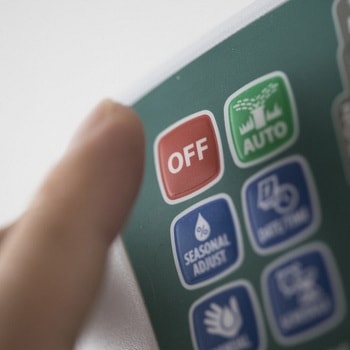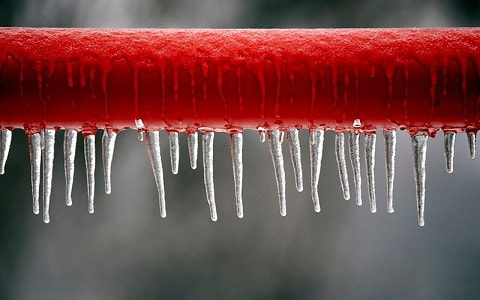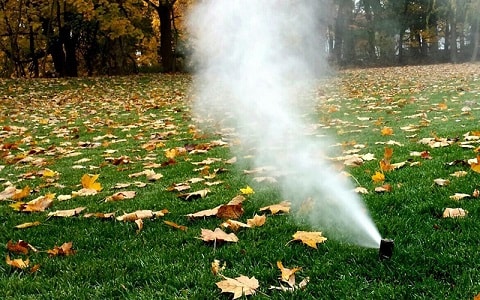Depending on your climate, you may or may not need to winterize yoursprinkler system. For the large majority of people living outside the Sun Belt, winterization is highly recommended. So if it's a need in your area, you should learnhow to winterize a sprinkler system. You're better safe than sorry when it comes to your home.

我n short, it's the preparation of your sprinkler system for winter. You can either drain your system orblow it out. Proper winterization ensures your system is protected from the elements and is maintained for long-lasting results.
As we all know, water expands when it freezes. This creates issues in the winter if there is sufficient water remaining in yourPVC pipes. Remember, even if you live in an area where air temperatures rarely reach freezing, your pipes are 6-12 inches below the ground and can be subjected to lower temperatures than you realize. Come springtime, you do not want to turn on your system and find out you have cracked or broken pipes or split valves. It will take time and money to diagnose and repair. With the proper precautions, you can avoid the headache of spring repairs with fall measures.
我t is strongly recommended that you prepare for winter by blowing out a sprinkler system之前第一次广泛的冻结. Why? Even during the first freeze, underground sprinkler systems can be harmed. By winterizing your sprinkler system in a timely manner, you can save money and headaches down the road. Check out thishandy guidethat will help give you an idea when to expect the first freeze in your part of the country.
There are a few different ways to go about this. One method, as mentioned is toblow out the sprinkler system. There is a much easier method that doesn't always get the job done,simply drain the system. We'll start with the sprinkler blow out:

Properly built sprinkler systems have check valves located at all the low spots in the system, which are intended to drain as soon as pressure is released. Because the lines are underground, it is hard to know if they are even there and if they are still working. Blowing out your sprinkler system is a great way to ensure that your water lines stay intact during the cold winter.
Below you will find instructions for the most commonly used way to blow out any residual water in a sprinkler system. You will l need eye protection, a compressor, and a valve key. If desired, an insulated blanket to kneel on may be helpful, as would a flashlight (for peering down the access pipe that leads to your stop and waste valve).
Tips:Please take note about protecting your pets. Domestic animals, both cats, and dogs are sensitive to sounds outside the range of human hearing and compressors can be very loud. Remember to protect your pet's sensitive ears by keeping them inside for this project.
There are two main methods for draining your sprinkler system:
Automatic systems make the job easy and you can get all the components you need for aToro sprinklerorRain Bird sprinklerinstallation here at PlumbersStock. You use this method when you have automatic drain valves* at the low points in your setup.

*What Is an Automatic Drain Valve?
Automatic Drain valves, also known asking drains, release the water in a sprinkler line as soon as the pressure is relieved. The pressure holds the water in place, just like covering the top of a straw in a glass of water will not allow the water to release from the straw until you move your finger. This is why opening each sprinkler valve, in turn, is so important. Skipping this step will eventually lead to broken pipes.
Just because you can do it, doesn't mean you should. It might be a good idea to leave a blow out to the professionals. If you use too much pressure, you can cause permanent damage to the pipes, defeating the whole purpose of winterization. If you are not experienced with the task, it might be too risky to perform without someone experienced on hand. If you are determined to do it yourself, just make sure you do not use more than 80 PSI on PVC piping. It is not recommended to go beyond that threshold. There you have it. With all the information you need on how to winterize a sprinkler system, you are ready to take on the task and then enjoy the few months you have with little-to-no yard work until spring comes. Remember, you can save on everything fromsprinkler timerstorain sensorsat PlumbersStock.
Related Resources:
Spring Maintenance Checklist for Sprinklers
Late Summer Lawncare Tips
When Should You Water Your Lawn


